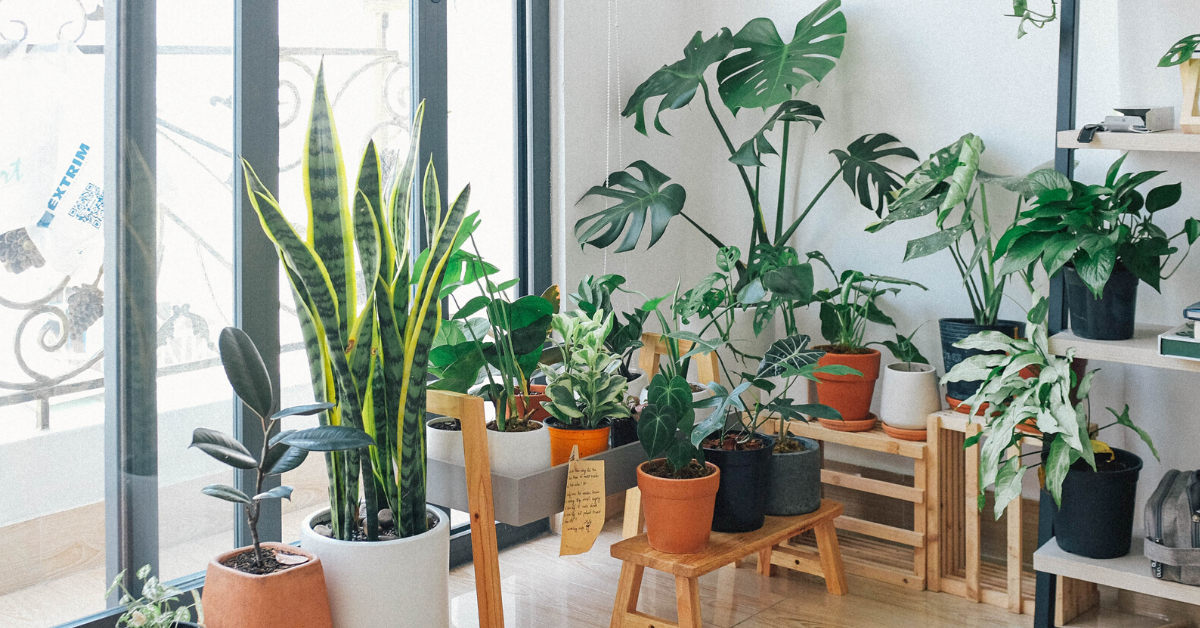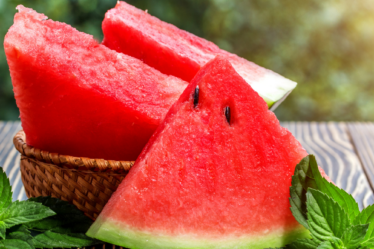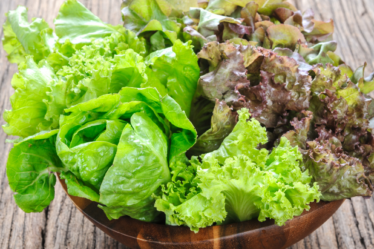
If you have a small piece of land that you can use for a garden, you are indeed lucky! Anywhere around the house, just a tiny patch of land can be used to make into a small vegetable garden for yourself and your family, giving you fresh produce almost every day.
Not just to save money on buying organic vegetables, your own vegetable garden you can eat fresh for every meal, and not have to depend on store-bought products. You can also have the complete freedom to decide what you want to plant in your garden and feed your family, and also how you plan to grow your vegetables.
However, starting your very own small vegetable garden isn’t going to be easy unless you know everything first. There is a lot of information regarding your vegetable garden that you need to understand and prepare for before you actually start working on your garden, which you can, hopefully, find here in this article.
Which is the Ideal Time to Start a Garden?
If you are completely new to gardening, this might not be common knowledge for you, but there are certain times during the year that vegetable gardens should be started.
Depending on where you live in the world, vegetable gardens should be ideally started in the months following the frost, which is around April in most regions of the world. Besides, the ideal month for each vegetable depends on what type of vegetable you want to grow: cool-season vegetables or warm-season vegetables.
Cool-season vegetables such as broccoli, asparagus, cabbage, collards, garlic, Brussels Sprouts, etc. need to be planted during the late spring months or early summer so that the plants mature before winter comes.
On the other hand, warm-season vegetables like tomatoes, cucumbers, eggplants, okra, muskmelons, and pumpkins need to be planted immediately after the last frost of the winter season melts away. This will allow the vegetable plants to grow, mature and start bearing fruit when summer arrives.
What are the Best Vegetables to Grow?
With some vegetables, you’ll get plenty of yield with minimum effort, which is absolutely perfect for a beginner with a very small piece of land.
Certain vegetables, like tomatoes, grow in a bunch, and the right set-up can give you more yield than you can imagine in only a few plants. Cherry tomatoes and grape tomatoes, in particular, are extremely high yielding varieties that don’t need a lot of looking after.
Cucumbers and beans, too, grow in abundance, as do potatoes, sweet potatoes, zucchini, squash and okra. These plants require minimum maintenance once planted but end up giving regular yields for a few cycles every season.
What Are the Easiest Vegetables to Grow as a Beginner?
As a complete beginner, the best vegetables to grow are the ones that would be easiest to take care of and harvest. This includes vegetables like salad greens and radishes that are ready to harvest only after 3 to 4 weeks of planting. They can also be grown very easily on a small piece of land and doesn’t require much tending.
Potatoes, onions and garlic are also maintenance-free crops. Simply planting them in well-drained soil is enough for these vegetables to start growing in a few weeks.
Beets, cherry tomatoes, green beans, kales, peas, lettuce, radishes and cucumbers too are some of the easiest and hassle-free vegetables for beginners to grow that only require small patches of soil to grow.
What are the Hardest Vegetables to Grow as a Beginner?
On the other hand, some vegetables are extremely hard to grow and maintain, and should not be attempted as a beginner.
Cauliflowers, broccoli, and cabbages, for example, need to be planted well in advance and could take up your entire vegetable bed for months with very little yield. They are susceptible to bugs and can only mature at a certain temperature, making their plantation impossible and unprofitable in certain climates.
Eggplants are most prone to bugs and fleas and require constant taking care of. Even experienced gardeners and professionals can sometimes have trouble with getting good-quality eggplants in their plants.
Other vegetables that are also hardest to grow profitably include celery, sweet corn, carrots, onions, sweet potatoes, artichokes and muskmelon, either because they attract a lot of bugs or because they require constant maintenance.
How Should You Prepare Soil for Vegetables?
The soil in your vegetable garden needs to be prepared based on where you live in the world, what kind of soil you have and the kind of vegetable you want to grow.
If you already have good-quality soil in your garden, there will be less requirement to add pesticides or fertilizer. However, if the natural soil in your garden isn’t suitable for growing anything, it can always be replaced or enhanced with organic soil.
Preparing soli for a vegetable garden mostly requires for the soil to be loosened with appropriate gardening tools, so that they become fluffy and fills up with air. Adding a little bit of organic soil – which is a mixture of decaying leaves, animal compost and grass clippings – can also improve the quality of the soil.
A lot of other things can also be added to your soil to improve its quality, including forest humus, moss, aged manure, mulch, decomposing vegetable and fruit peels, live worm and more. Besides, the soil needs to be dug regularly with gardening tolls so that the bottom layers get adequate air supply, and so that water can reach the deepest layers of soil.
å
What is the Best Layout for a Vegetable Garden?
Of course, it all depends on the amount of land you have to make into a vegetable garden, but the best and the most basic layout is this: a design with straight and long rows.
The best garden layouts also run north to south, if possible, to make sure all the plants are getting the best exposure to sun and air. On the other hand, if your vegetable garden runs east to west, most of the smaller plants can be deprived of sunlight.
The tallest plants – if you are planting beans, okra, papaya or corn – needs to be on the north side of the garden, and the shortest crops like radishes, carrots and lettuce need to be grouped on the southern end.
For all kinds of vegetable plants, a “four-square garden plan” is the best option. This means dividing your plants into squared boxes so that you can water each square according to the plants’ needs. With individual square garden plans for each plant type, you can add the particular kind of pesticides or fertilizers they need.
If you’ve started a vegetable garden for your family’s use, you won’t need garden plots bigger than 4” x 4” for each vegetable type. Each of your square garden plots can hold enough plants to provide you with enough vegetables for your meals, as well as to share with your friends and family.
What Vegetables Should not be Planted Next to Each Other?
Not all vegetable plants are compatible to be planted next to each other; some plants actually don’t like each other and might even be harmful to each other.
Tomatoes and bush beans, for example, shouldn’t be planted next to each other as the tall tomato plants might overshadow the shorter bean plants. Planting broccolis can actually leave behind some harmful residues that other plants like Brussel Sprouts, cauliflowers, cabbages and collard greens can’t tolerate.
If you are planting carrots, remember not to plant dill, potatoes, parsnips or celery near them, because root vegetables require high levels of phosphorous that will harm other kinds of plants.
Cabbages, broccoli, and kohlrabi will limit the natural growth of vegetables like bell pepper if they are planted together. Similarly, potatoes will take away all the nutrition from the soil leaving weaker plants like zucchini to struggle nearby.
What Vegetables can be Planted Together?
Alternatively, some vegetables – when planted together – help each other flourish. This is known as “Companion Planting” because these plants protect each other and act as each other’s caretakers.
Mint, for example, with its strong aroma, repels cabbage moths and ants. Sage is another aromatic and helpful herb that repels cabbage moths. Since cabbage plants attract a lot of insects and pests, this plant is usually planted beside herbs with strong scents.
Marigolds, although not a vegetable, are planted next to tomato plants as they repel nematodes that attack the roots of tomatoes. Onions and garlic are also planted in the same beds as tomatoes to help prevent pests, snails, and slugs.
In the same way, thyme repels worms that are found near cabbage plants and rosemary repel beetles which usually attack different types of beans.
Usually, it is aromatic herbs that are planted near vegetable plants to repel various bugs and insects with their strong aroma, but other vegetable plants are also a part of companion planting for their physical support or because their maintenance regimes are the same.
What Compost is Best for Vegetables?
When it comes to compost, it is always better to use something that’s natural and organic. For vegetable plants, aged compost is the best option.
Compost is the kind of fertilizer that’s made by decomposing kitchen scraps, food leftovers, vegetable and fruit peel, leaves and remains of other plants. This kind of natural compost can be prepared at home or bought from any local garden center. For the health of your plants and to keep your vegetables chemical-free, compost is a much better option than using chemical fertilizers.
Aged compost is brownish or blackish in color, a little moist and crumbly, but uniform in its texture. It is sometimes known as humus, and can easily mix with the soil to enhance its quality.
Most homemade or store-bought compost is of similar quality, as long as nothing artificial or chemical is added to them. The trick is to add just the right amount of it to your plant beds: neither too much nor too little.
Compost must be evenly spread out throughout your garden beds, preferably early in spring and after each completed harvest.
Can I Plant Directly into the Compost?
While it is technically possible to plant your seeds directly into compost, it is not the best option. Compost – when mixed with an adequate amount of soil or dirt – makes the best garden bed for planting and growing vegetables.
Compost is used as an additive to enhance soil quality, not to be used directly as soil for planting. It needs to be added to soil evenly and before every harvest to make sure that your plants get the best nutrition while growing. If the soil quality is very bad and your plants need a fertile bed, compost needs to be added liberally to the soil.
Compost can also be used in potted plant soil, especially when it contains Sphagnum peat moss, vermiculite and perlite. They lighten up the soil mix and retain water, making plants grow better in small pots and containers.
However, planting directly into compost is a bad idea and a classic example of “too much of a good thing can lead to problems”. Planting your vegetables directly into compost will cause ammonia toxicity and unnecessary salinity in plants. Besides, planting directly into compost will also deprive your plants of the nutrition found in soil.
When Should I Add Compost to my Vegetable Garden?
Early March is the perfect time to start adding compost to your garden beds, at least one to two weeks before you start planting your next harvest. This is when you are using store-bought and bagged compost, which is always easily available in garden centers.
On the other hand, if you are making your own compost at home, they should be added to the garden bed mid-autumn. This will make sure that the compost has mixed well the soil and decomposed before spring comes and you can directly start to plant your vegetables by that time.
How Much Compost Should I Add?
The Golden Rule of Thumb is to add ½” or ¼” of compost to the top of the soil if you’ve already planted your vegetables, and 1” to 2” of compost if you plan to dig the soil and mix.
The maximum amount of compost in any garden bed shouldn’t exceed more than 30% 0f the mix, and 25% in the case of raised garden beds.
Although compost is healthy for plants, it needs to be added in moderation. In the case of a vegetable garden, 1” to 3” of compost evenly to your garden beds and then mixing them with the soil should be more than adequate for healthy vegetables to flourish.
Conclusion
Starting a vegetable garden is easy when you have all the information with you. With just a little piece of land around your house, a little time on your hands and all the necessary knowledge of gardening, you can, in a very short time, provide fresh and organic vegetables for yourself and your family.


